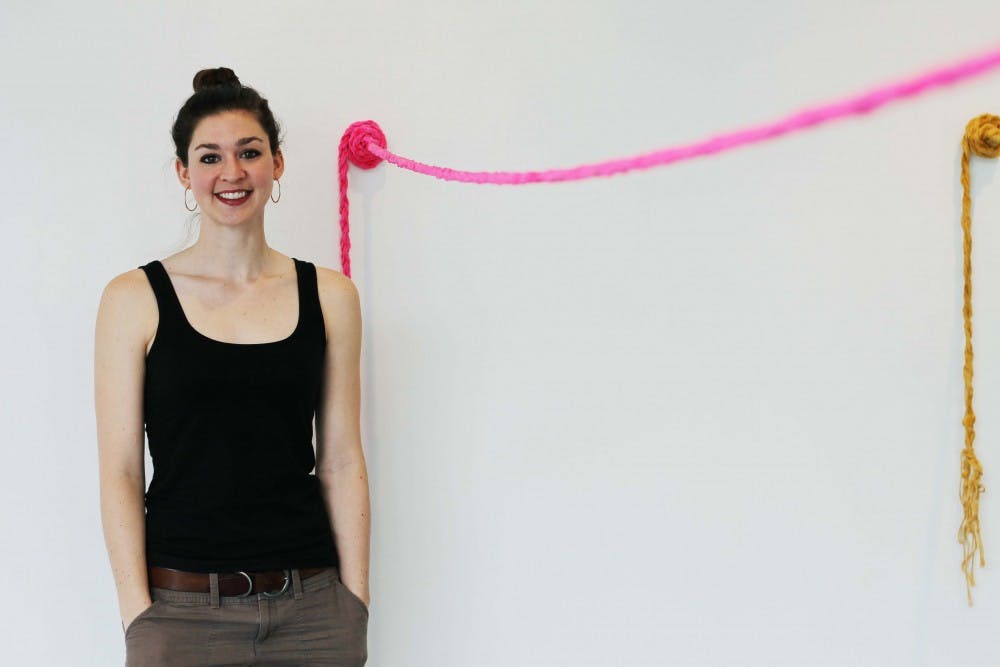Lauren Salazar, a Master of Fine Arts student, will be displaying her work as part of the MFA series “Your Turn to Burn.” Her exhibit, “Intertwined,” is composed of weaved twine and string to look abstract and geometric.
Staff writer Elizabeth Tew spoke with Salazar about her inspiration for the exhibit, her process and the show’s themes.
Daily Tar Heel: How would you describe your art for this exhibit?
Lauren Salazar: I think that it is pretty formally abstract, but behind that formalism is this concept of presenting dualities that I think often don’t coexist — like craft and fine art, weaving and sculpture, or feminine and masculine.
These are often considered dualities, and I’m presenting them as coexisting equally in my work. Like the notion that people that often weave as an everyday craft, I’m presenting it in a heroic, contemporary setting.
DTH: What inspired your love for weaving and this exhibit?
LS: My great-grandmother loved to weave. I have one of her pieces in my kitchen as artwork. I love that I get to stay connected to the cultural connections I have with my family through weaving.
I get to construct weaving in this high-art way … I am challenging the notion that weaving is just a craft or just something your grandmother does. It can also be beautiful and powerful.
DTH: What is the message of your work?



